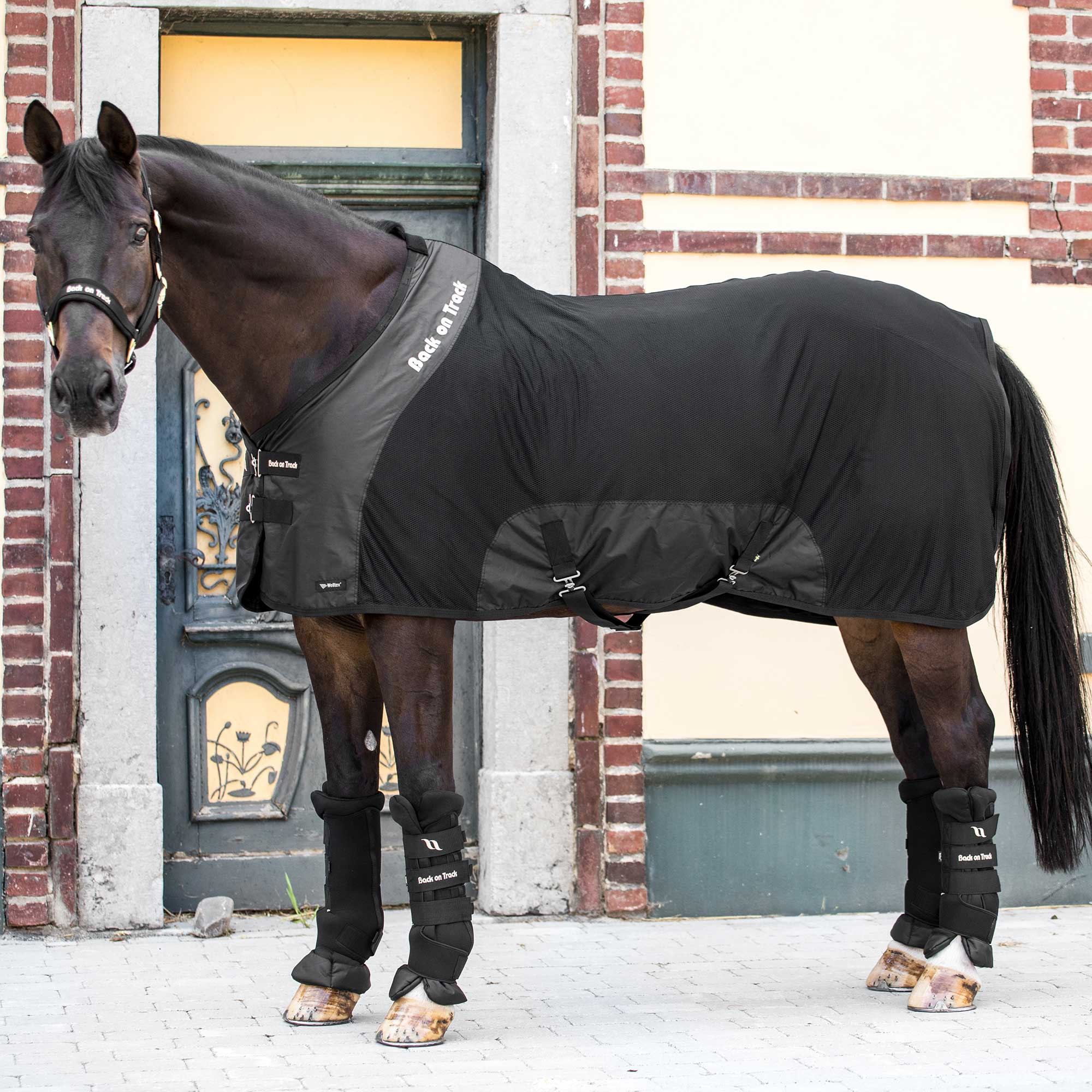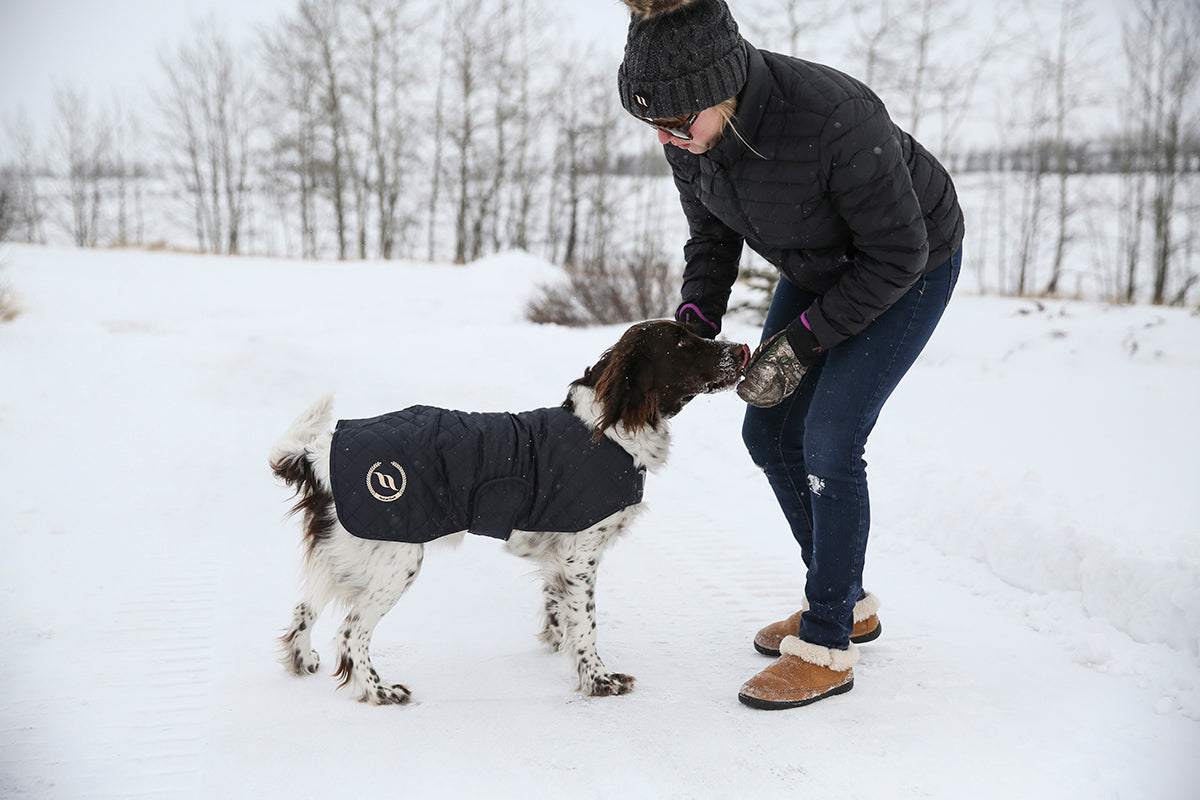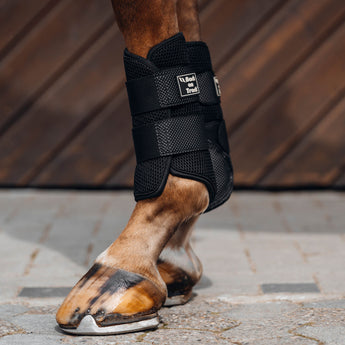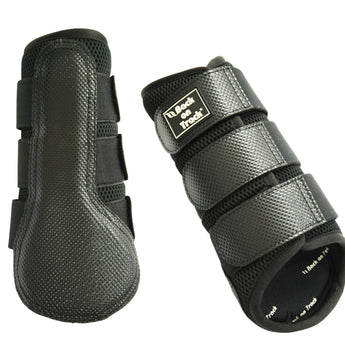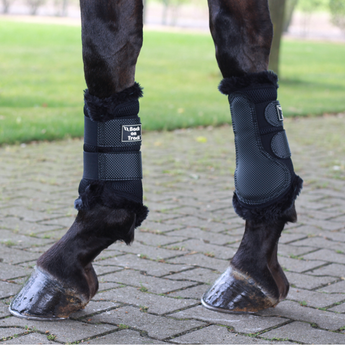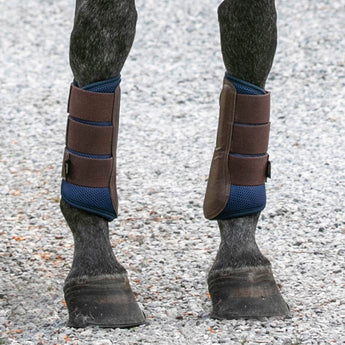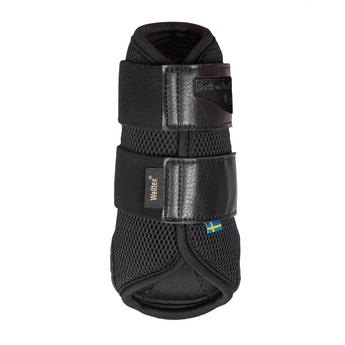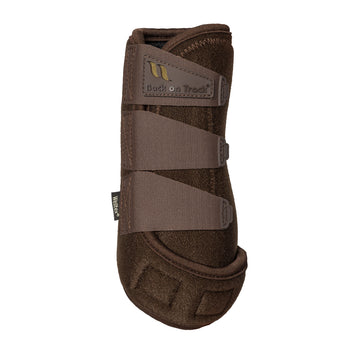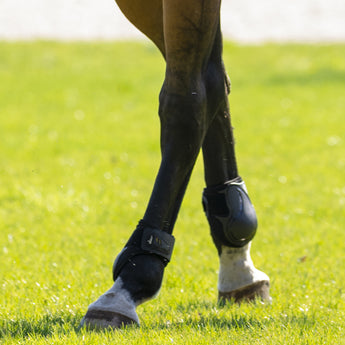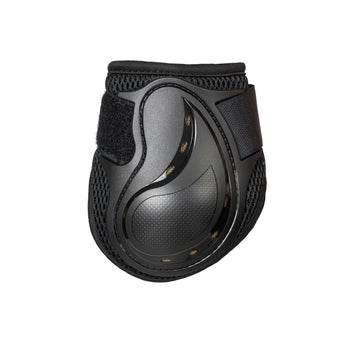Lower limb injuries are a common cause of equine lameness. While we can't bubble wrap our horses, we can minimize risk using horse boots and leg wraps for protection and support.
Horses have very little muscle on their lower limbs to protect the vulnerable bones, tendons, and ligaments from injury due to trauma. Leg protection is commonly used during high-risk activities to absorb impact and protect these sensitive tissues.
However, using the wrong type of horse boot or wrap can cause more harm than good. Keep reading to learn everything you need to know about different types of equine leg protection and how to choose the best horse boots and leg wraps for your horse.
Benefits of Leg Protection for Horses
Most horses don't need to wear leg protection 24/7. While the limited muscle in the lower limb makes the tissues more vulnerable to trauma, it also helps prevent the tendons and ligaments from overheating during work.
Understanding the different types of horse leg protection and when to use them can help owners maximize the benefits of horse boots while minimizing the risk of overheating.
Exercise
Many riders use boots and wraps to protect their horses' legs during exercise. Protective boots are essential if your horse tends to interfere, or accidentally strike his legs with his hooves. Interference is often common in horses with big gaits and growing young horses.
Some horses can benefit from boots that provide targeted protection based on their discipline. For example, cross-country boots can help protect eventing horses if they hit their legs against an obstacle while training or competing.
Turnout
Horses can also accidentally injure themselves in turnout. However, not all forms of leg protection are appropriate to leave on for extended periods while your horse is in the field. Consider your horse's temperament and turnout schedule to determine if he needs turnout boots.
Pulled shoes are another common concern during turnout. Horses often pull shoes during turnout by overreaching and stepping on a shoe with another foot. Boots that protect the back of the heel can help prevent pulled shoes, and many types are appropriate for extended wear.
Shipping
Horses can easily injure themselves during travel as they readjust their balance in the confined space of a trailer. Sudden stops and turns can cause the horse's legs to scramble, increasing their risk of accidentally knocking themselves with their hooves.
Loading and unloading also involve a risk of the horse slipping on a ramp or step. Leg protection used during shipping typically provides more coverage as horses can injure themselves by scraping against the inside of the trailer as well.
Recovery
Some boots and wraps aren't used to prevent injury due to trauma. Instead, these products support recovery and provide additional benefits for limb tissues, such as reduced swelling and increased circulation.
Types of Horse Boots
There are several types of horse boots commonly used as leg protection. The best boots for your horse depend on when and how you plan to use them.
Bell Boots
Also known as overreach boots, bell boots protect horses from heel strikes and overreaching. Heel strikes occur when the horse's hind foot overreaches and hits the front heel. This can lead to injury and pulled shoes.
No-turn style bell boots, such as the Back on Track Performance Bell Boot, are ideal for protecting against heel strikes during exercise. This type of bell boot has designs that prevent the boot from turning, ensuring horses have protection where they need it most.
While commonly used on front feet, bell boots are also helpful for horses who pull hind shoes due to interference with their hind legs. Some bell boots can be safely left on for extended periods while the horse is in the field. Look for bell boots made of waterproof material for turnout.
Bell boots made of materials that help increase circulation, such as Back on Track's Welltex technology, can aid recovery. The Back on Track Bell Boots - Classic Design, are popular for use during stall rest to support hoof health.
Brushing Boots
Brushing boots, also known as splint boots, are the most versatile type of protective horse boot. These boots protect the inside of the horse's front and hind legs from injury when the horse's hooves brush or knock them. Trauma to this area of the leg can cause splints.
Look for brushing boots with protective material on the inside of the boot and breathable material on the outside. Back on Track 3D-Mesh Splint (Brush) Boots have shock-absorbing padding and a 3D mesh outer layer to provide optimal protection and breathability.
If your horse is sensitive to rubs from boots, consider brushing boots lined with faux fur. The Back on Track 3D Mesh Splint (Brush) Boots with Faux Fur feature a synthetic fur lining for increased comfort.
Tendon Boots
Tendon boots are horse boots worn on the front legs to prevent injuries caused by the hind hooves striking the tendons. These boots are more protective than brushing boots but less flexible.
The best tendon boots include ventilation in the hard protective material to prevent overheating. Some tendon boots used for jumping have open fronts to encourage horses to be more careful over jumps.
Back on Track Airflow Tendon Boots feature air holes along the tendon for extra ventilation and a multi-directional anatomical fit for enhanced support. These boots are also available in faux fur for sensitive horses.
Fetlock Boots
Fetlock boots are commonly worn on the hindleg of horses wearing front tendon boots. These boots protect the hind fetlock from trauma, which can lead to lameness. Like tendon boots, these boots are typically used for jumping.
The Back on Track Airflow Fetlock Boots and Faux Fur Fetlock Boots provide the same benefits as the matching Airflow Tendon Boots. The outside shell is durable for maximum protection, and the strong hook and loop closures help keep these boots stable during exercise.
Exercise Boots
Exercise boots are lightweight horse boots designed to offer optimal support for the fetlock while providing 360-degree protection for the lower leg. Sometimes called support boots or sports medicine boots, this type of boot is especially popular with western riders.
The Back on Track Airflow Exercise Boots feature a secure design that allows freedom of fetlock movement and Airtech technology for breathability and moisture management.
Pastern Boots
Some riders use pastern boots to protect areas other types of boots and bell boots do not cover. These boots protect the sensitive pastern from impact during training. The Back on Track Pastern Bands are made of durable foam lined with Welltex technology to support circulation.
Horse Wraps and Bandages
Some riders prefer to protect their horses' legs with wraps and bandages. While boots are easier to use, this type of horse leg protection offers more customized fit and support than horse boots.
However, owners need to ensure they know how to safely and correctly wrap their horses before using this type of leg protection. Wrapping too tight can damage the soft tissues while wrapping too loosely can cause the bandage to come undone and get tangled.
Polo Wraps
As the name suggests, polo wraps originated from the sport of polo. These wraps provide leg protection during exercise and are commonly used by English riders for flatwork or dressage.
Most polo wraps, such as the Back on Track Fleece Polo Wraps, are made of fleece for breathability. The Back on Track Polo Wraps contain more elastic than traditional wraps for a better fit and are secured with a velcro closure.
Using bandage pads under polo wraps provides additional moisture-wicking and trauma protection. Some dressage riders prefer longer bandage pads for more coverage. The Back on Track Scandic PK Performance Leg Wraps are available in multiple sizes.
The Back on Track Royal Work Boots are a good substitution for polo wraps if your horse needs extra protection around the fetlock joint but you don't want to wrap him for every ride. These boots are designed for dressage and flatwork only.
Standing Wraps
Unlike polo wraps, standing wraps are not used during exercise. As their name suggests, standing wraps provide support while horses are stalled. A standing wrap consists of an inner padding and an outer bandage that holds the wrap in place.
Standing bandages are typically taller, longer, and less stretchy than polos. No bow leg wraps are a popular inner padding. These wraps provide extra cushion to eliminate pressure points.
The Back on Track No Bow Leg Wraps utilize Welltex technology to create a soothing far infrared thermal effect, which can help keep your horse's legs cool and tight. These wraps are popular for use overnight, after exercise, or during shipping.
Quick Wraps
Quick wraps are an alternative type of stable bandage that can provide similar benefits to standing wraps without the inconvenience of wrapping. The Back on Track Royal Quick Wraps Deluxe have convenient hook and loop closures and a thick inner pad lined with Welltex technology.
These Quick Wraps also feature reinforced water-repellent fabric that covers the top of the hoof and an improved anatomical fit to minimize pressure on the tendons. This type of wrap is ideal for shipping and provides a safer alternative to bandages, which can become undone during transport.
Traditional standing wraps can only provide support for the lower leg. However, Back on Track also offers Hock Boots and Knee Boots that provide the same benefits for horses that need extra support for other joints. These boots are ideal for use with the Quick Wraps.
[View Horse Leg Protection Guide Chart]
Learn More from Back on Track
Follow Back on Track on Facebook and Instagram @backontrackusa for more educational content.
Sign up for the Back on Track newsletter to never miss a new guide.

